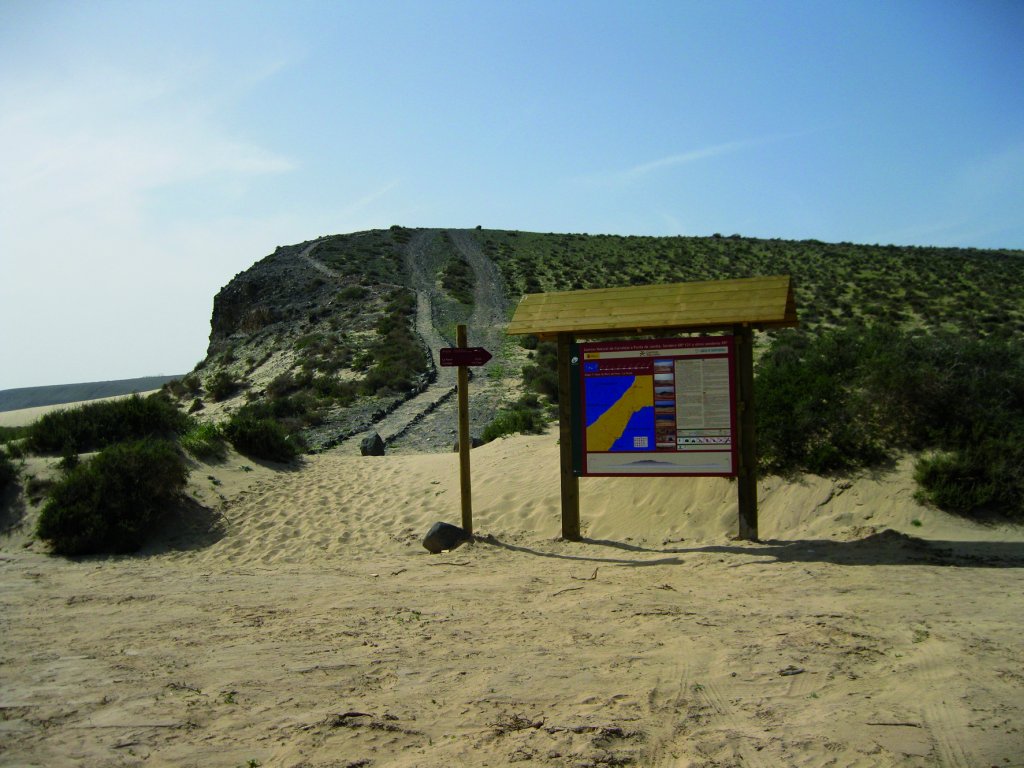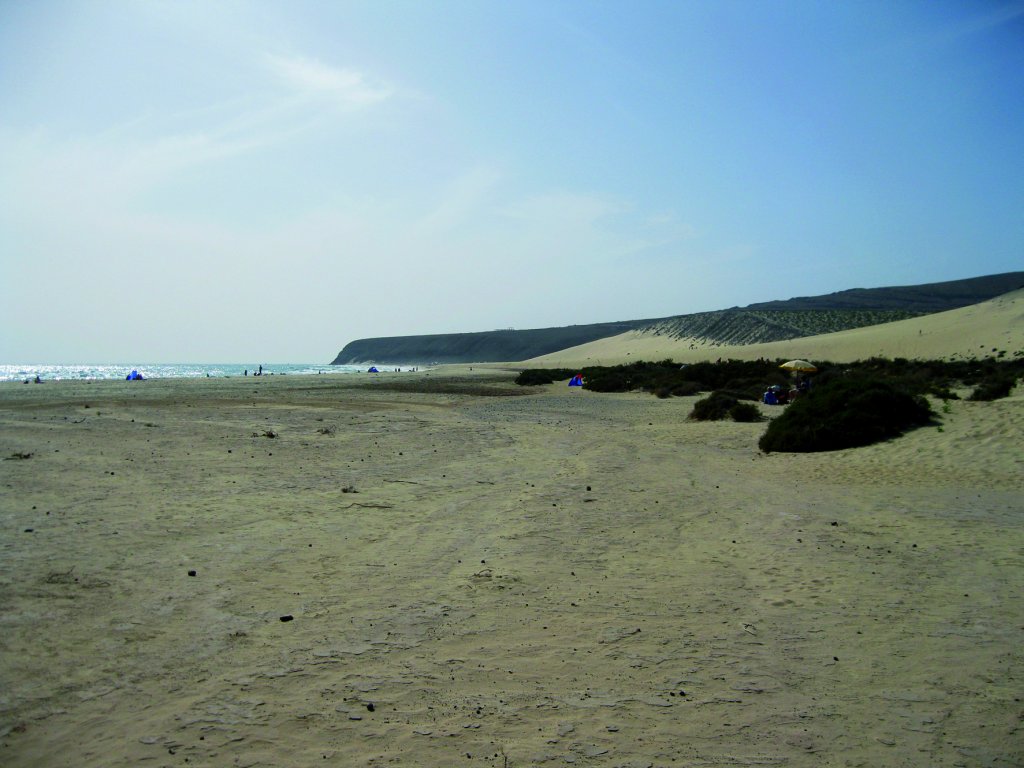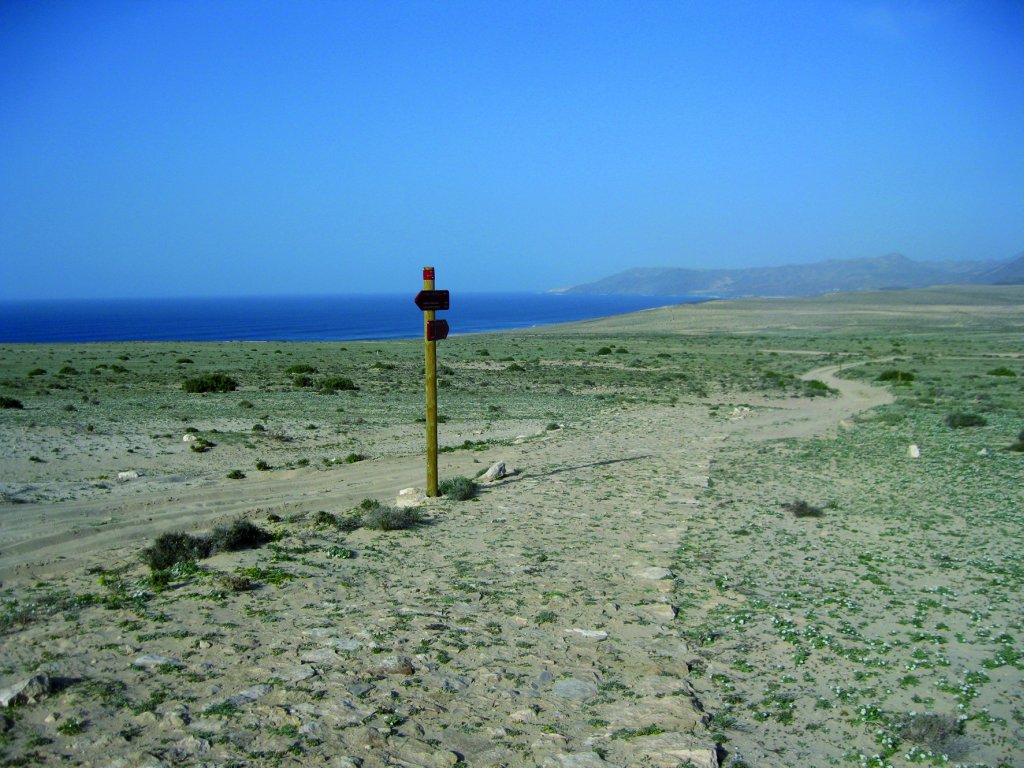- Home
- Rural Development
- Nature Trails
- Nature Trails
- Canary Islands Sector
- Fuerteventura
Stage 7: La Pared - Casas del Risco del Paso
Description

Along the Peninsula of Jandía
The Nature Trail goes through the urban area of La Pared and enters Jandía Natural Park - which includes most of the peninsula of the same name - through the rough and gritty landscape of El Jabe in the direction of the eastern coast of the island, where the trail ends on the beautiful beach of Risco del Paso.
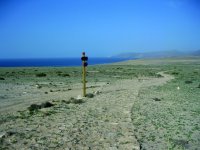
This stage of the trail begins at La Pared, a small, quiet residential area with golf and horseback riding facilities. Quite nearby is the beach of La Pared, which, unlike other beaches in the municipality of Pájara, has black sands created by the effect of wave erosion on the volcanic terrain of the area.
We begin the trail along an avenue that runs through the housing development of La Pared towards Piedras Negras, with a gentle ascent that will take us to an area called El Jable, which is the largest fossil dune formation of Fuerteventura. In order to reach this area, we will follow the last stretch of asphalt road and take the last track on the left, which leads to the Piedras Negras junction. From here, we can glimpse the windmills of a wind farm.
This part of the trail that starts at Jable runs almost entirely along the old road of the prisoners, so called because it was built by political prisoners. The road was made in the years 1946-1948 and it led to Cofete. Along this trail we will see limestone pavement sections which belong to the old road, although most of it has disappeared or is buried under the sand.
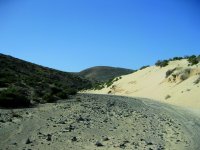
The trail continues, leaving behind El Granillo Mountain on the left side of the road, and, for nearly 10 km, we will hike through the rugged, sandy area of El Jable, a broad, gently undulating plain with a predominance of light colors created by the presence of calcareous sands of marine origin.
El Jable has one of the largest populations of endemic Canary Islands houbara bustard (Chlamydotis undulata fuertaventurae), which is the symbol animal of the island. We can also see in these sub-desert areas other steppe birds, such as the Eurasian stone-curlew (Burhinus oedicnemus), the cream-colored courser (Cursorius cursor bannermani) and the black-bellied sandgrouse (Pterocles orientalis).
We leave behind us, to the right, Alto de Agua Oveja, and we continue the trail towards the foothills of Lomo Cuchillete, where the Nature Trail turns south. Gradually, we begin to see more vegetation, and the sand track is replaced by a dirt track. Then we descend along a gentle slope following the riverbed under the ravine of Vachuelo de Cuevas, and we skirt Atalayeja Grande, in an area that allows us to observe the contrast between the dune system and the gritty slopes of the ravines.
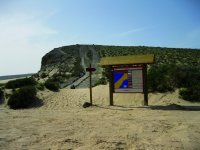
We then reach Casas de Pecenescal, where the livestock farming and agricultural tradition of the area becomes obvious. From there, we go down the Pecenescal ravine and we cross the road by an underground passage, in order to follow the path to the coast, until we reach Casas del Risco del Paso on the southern tip of El Jable de Jandía.
At the end of the section we will see the wonderful beach of Risco del Paso, which stretches along several kilometers of beautiful golden sand and in places is more than 60 meters wide: a real paradise for bathers and water sport lovers.
Profile
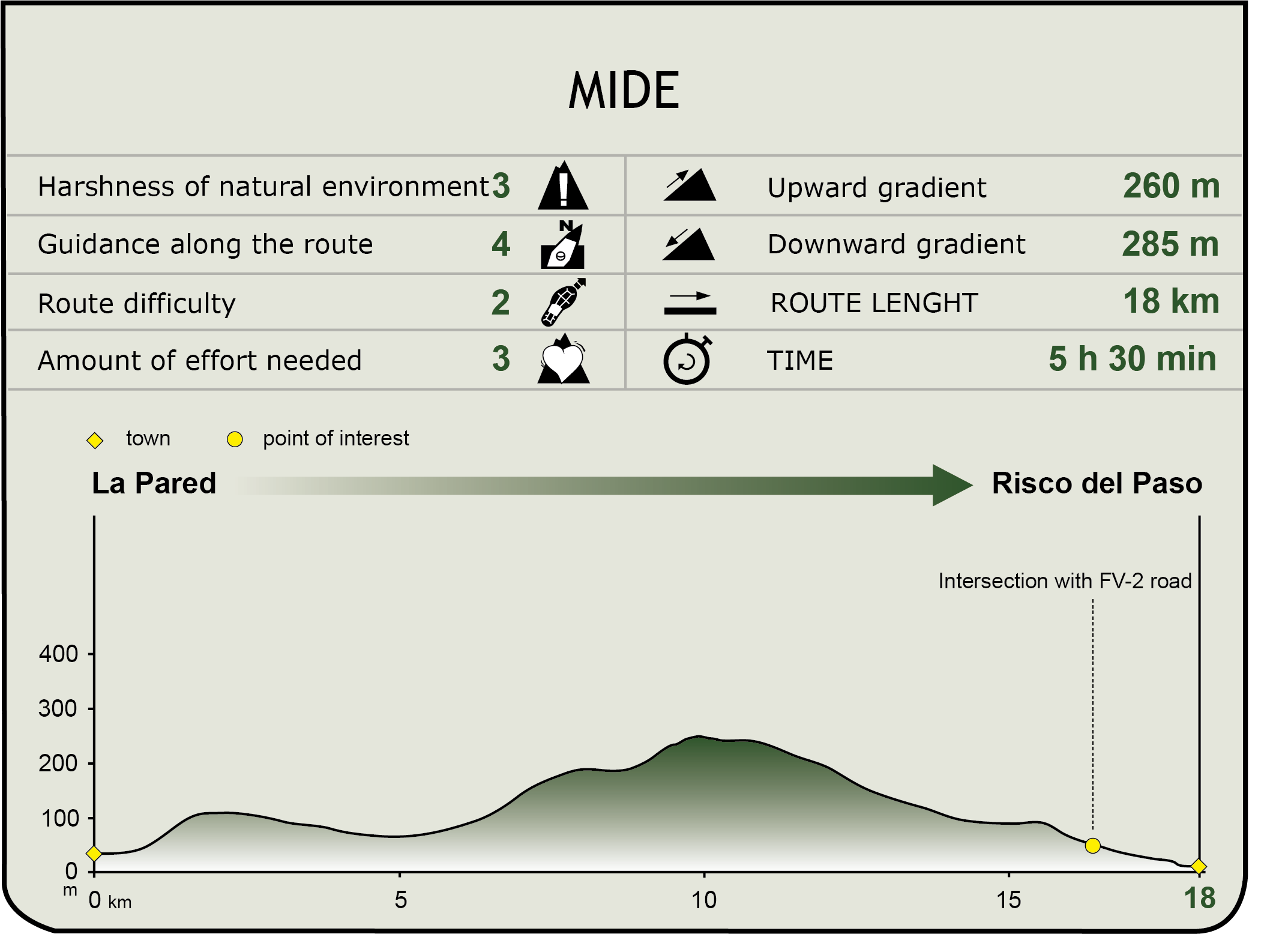
MIDE (Method for the Information of Excursions)
Featured
Further information
Parque Natural de Jandía
Once we leave the urban area of La Pared, we will be within the natural park of Jandía, which occupies most of the peninsula of the same name, with a total area of 14,318.5 hectares. In Jandía, the sands are slowly dragged through wind corridors, covering hills and filling up valleys, from which they pour into the Sotavento or leeward beaches.
The impressive landscape of Jandia is an almost wholly unspoiled area of high geological and biological interest, in addition to the sheer beauty of the landscape; it is one of the most unique natural environments of the whole Canary Islands.
This territory was named a Natural Park in 1987 by the Law of Creation of Natural Areas of the Canary Islands, and it remains so in accordance with the current Law 12/1994, of 19 December, on natural areas of the Canary Islands.
Its fauna and flora boast many endemic species, and it is home to some protected species. In addition, Jandía Natural Park has been named a special protection area for birds (SPA) since it is a vitally important environment for birds.
